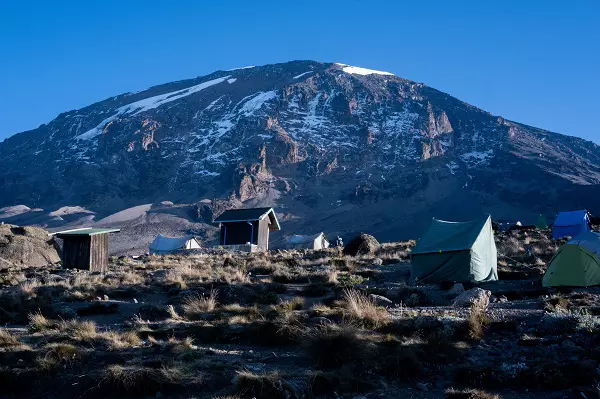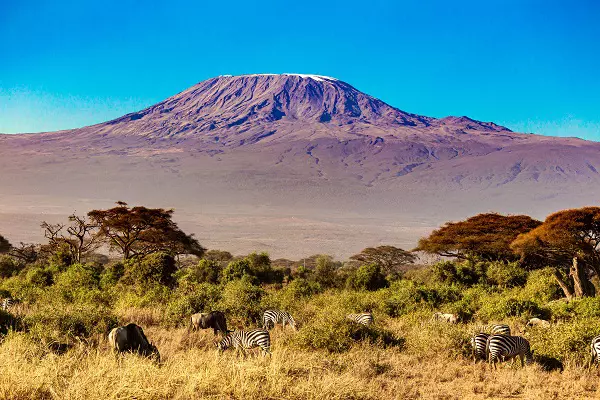
Benefits of Climbing Kilimanjaro in March
Lower crowds: Climbing Kilimanjaro in March means that you'll encounter fewer crowds on the mountain than in the high season. This can be a significant advantage as there will be fewer people on the trails, and you'll have a better chance to enjoy the mountain's stunning natural beauty.
Cooler temperatures: Climbing Kilimanjaro in March means you'll be climbing during the cooler months of the year. While the temperatures on the mountain can still be quite high, especially at lower altitudes, the cooler weather can make it easier to acclimatize to the altitude and reduce the risk of altitude sickness.
Beautiful scenery: The rainy season in Tanzania means that the landscape surrounding Kilimanjaro is lush and green. The mountain's vegetation is also in full bloom, making it a beautiful time to climb Kilimanjaro. You'll also get to witness incredible sunrises and sunsets, with the clouds parting to reveal the breathtaking views of the African plains below.
Challenges of Climbing Kilimanjaro in March
Heavy rainfall: March falls within the rainy season in Tanzania, and Kilimanjaro receives heavy rainfall during this period. The heavy rainfall can make the trails slippery, muddy, and more challenging to navigate. Climbers will need to be prepared with appropriate gear, including waterproof hiking boots, rain jackets, and pants, to stay dry during their climb.
Cold temperatures: While the cooler temperatures can be an advantage for climbers, they can also present challenges. The temperature on Kilimanjaro can drop below freezing at night, and climbers will need to be prepared with warm clothing, including thermal layers, down jackets, hats, and gloves.
Shorter daylight hours: March falls within the autumn season in Tanzania, which means that the days are shorter than in the summer months. Climbers will need to plan their ascent and descent accordingly, ensuring that they have enough time to reach each day's destination before sunset.
Tips for Climbing Kilimanjaro in March
Be prepared for the rain: Climbers should bring waterproof gear, including rain jackets and pants, to stay dry during their climb. It's also a good idea to bring extra pairs of socks and hiking boots with good traction.
Dress in layers: The temperature on Kilimanjaro can fluctuate widely during the day, so it's essential to dress in layers. Thermal base layers, a fleece jacket, and a down jacket are essential clothing items to pack.
Take extra precautions for altitude sickness: Climbing Kilimanjaro is a high-altitude trek, and climbers must take extra precautions to avoid altitude sickness. Staying hydrated, ascending slowly, and taking acclimatization breaks are essential to minimize the risk of altitude sickness.
Choose a reputable tour operator: Climbing Kilimanjaro is a challenging and potentially dangerous trek, and climbers should choose a reputable tour operator with experienced guides to ensure their safety.
In conclusion, climbing Kilimanjaro in March can be an exciting and rewarding experience, despite the challenges presented by the rainy season. The lower crowds, cooler temperatures, and beautiful scenery make it a great time to summit the highest mountain in Africa. Climbers should be prepared for the heavy rainfall, cold temperatures, and shorter daylight

